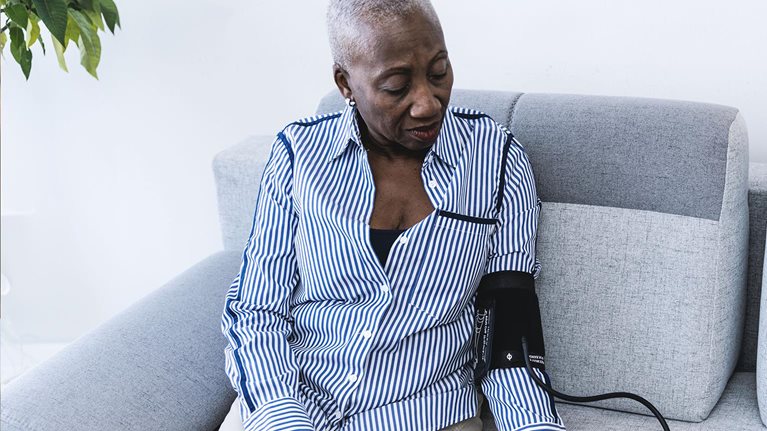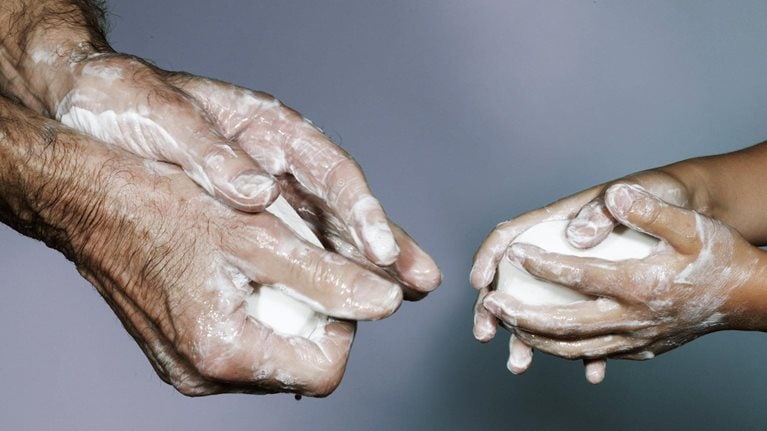As US surgeon general from 2014 to 2017, Vivek H. Murthy, MD, created initiatives to tackle the country’s most urgent public-health issues, including the Ebola and Zika viruses, obesity, mental health, and the opioid crisis. In a conversation with McKinsey’s Pooja Kumar on May 8, 2020, Murthy discusses his concerns about a “social recession” stemming from the COVID-19 crisis. He issues a call to action for high-quality healthcare in flexible settings and warns against losing the improvements the pandemic has spurred.
Murthy is the cofounder of several organizations, including TrialNetworks, a software-technology company, and Doctors for America, a group of more 18,000 physicians and medical students supporting high-quality and affordable care for all. He is also the author of the book Together: The Healing Power of Human Connection in a Sometimes Lonely World (Harper Wave, 2020). A condensed and edited version of Murthy’s remarks follows.
Loneliness and living your priorities
Long before the pandemic hit, I was deeply concerned about loneliness. In the age of COVID-19, I’m worried that loneliness could deepen further, that we could see the physical distancing that we’re asked to observe translate into social distancing as we feel more and more disconnected from the people we need in our lives.
The irony is that this is happening during a time of extraordinary stress, when our lives are turned upside down. Typically, in moments of stress, we reach out to people. We spend time with people we love. And now we’re being asked not to do that, at least in physical terms.
So I worry that we may incur what I think of as a social recession, with profound consequences for our health, for our productivity in the workplace, for how our kids do in school.
But I also think that this could be an extraordinary opportunity for us to step back and ask ourselves if we’re leading the kind of lives that we really want to lead. This is our chance to ask ourselves where people fit in our priority list and whether there’s a gap between our stated priorities and our lived priorities.
If you asked me what my top priorities are, I would be very clear: they are the people I love—my mother, my father, my wife, my sister, my two children, my brother-in-law. But the harder question is, How am I actually living my life? Are the decisions I’m making about where I put my time, energy, and attention consistent with those priorities? If I’m honest with you, I would tell you that a lot of times they’re not.
So there’s a gap in my life, between my stated and lived priorities, and this moment highlights for me just how important it is to close that gap. I think many of us are realizing something we already knew in our hearts, which is that our relationships matter deeply to us, that they’re not just nice to have; they’re necessary to have.
The consequences and opportunities of a social recession
The science behind it tells us that such gaps affect our health and our workplace performance. There’s been some really interesting research by Sigal Barsade, a professor at Wharton, who, along with others, has found that loneliness is extremely common in the workplace and that it shows up as greater disengagement—which has downstream effects on their productivity, on their creativity, and even on their job retention.
The same is true with kids. Children who are lonely struggle when it comes to learning, and their outcomes are threatened. If we want our kids to do well, if we want workers to do better in the workplace, if we all want to be more fulfilled and healthy, it turns out that human connection is at the center of it all.
If we use this moment to recognize that to build lives centered around people, and to make the case for creating a people-centered society—where we think about human connection as we design workplaces and schools, where we think about human connection when we’re assessing the impact of policy as well—then I think we will put ourselves on the path to creating a society that is healthier and stronger, but also more resilient, than before the pandemic began.
Lessons from public service
One of the things I learned in government about pandemic response is that, while there’s a lot you have to do, there are a few core principles that you absolutely have to adhere to. One of them is to communicate transparently and truthfully, even when it’s hard, especially when you mess up.
The second is that you have to lead with science and with scientists, putting them in front of the microphone and the camera, letting science guide your decision making, even when it’s not popular.
And the third is that you have to get the resources to people on the front lines. In this case, that’s nurses and doctors. It’s grocery-store workers. It’s postal-delivery people. It’s people who have to put themselves in the line of fire, so to speak.
A wake-up call for better healthcare
I think this crisis is a wake-up call on many different levels: in terms of how we think about society, in terms of how we think about structural inequities in our system, in terms of how we think about health. I think we’ve got to do such a better job of ensuring that people can get high-quality care, and that they can get it in flexible settings.
I think about a future society that needs fewer and fewer clinics and hospitals because we’re doing two things better: we’re bringing care to where people are, in their homes and in their neighborhoods; and we’re doing better at prevention and changing underlying drivers of health, whether they’re someone’s access to food, their ability to get out and exercise, or their ability to form strong social connections.
If we can do that well, then I think people will live healthier, better lives.
But this epidemic has pulled back the curtain on the good, bad, and ugly of what’s happening in our healthcare system. It’s shown us that we have heroic staff—extraordinary nurses and doctors and frontline workers—and we have many hospital systems that are working well and have risen to the challenge. But it’s also showing us just how incredibly uneven things continue to be, how access is still difficult, how quality is still so variable. And how we have just, frankly, failed in medicine to use technology to its fullest extent—to not just enable us to deliver care to people in need but also to actually handle the data we receive and for it to generate the insights we need in order to target care in the most appropriate way.
This is a call for us to use technology better, to do it faster, to do it more aggressively, so that not only are we prepared for the next pandemic but also so that, even in between pandemics, we can, frankly, just provide better care to people and do the job that people expect of their medical and public-health systems.
I think that what happens in general, not just in healthcare but in every realm of life, is that after a crisis, people slip back to the way it was before the crisis. We have to make a difference this time. We can’t afford to go back to our old lives, where we allowed people and relationships to slip to the side and be lower priorities. You’ve got to keep people at the center. And when it comes to healthcare, we can’t afford to go back to the way it was working, or not working, prepandemic—we now know that the cost is tremendous, in terms of dollars and, most important, in terms of lives.
It’s going to take real leadership, both from government and the private sector, to keep us in an uncomfortable place, so that we can keep moving and not stay in the place where we are.
Local health departments and the technology gap
Think about how we handle data: if you’re out there tracing contacts, what do you do with the data you collect? Where do you put it? How is that data actually compiled across your local department, but also other departments, so we can actually start to see patterns more broadly?
It turns out that there is no set of best practices for how to do contact tracing, in terms of what technology you should use and the infrastructure you should set up, that’s actually being used by local departments of health across this country. But I’m telling you that those departments of health could sure use some help from technology companies that have the ability to set up systems to handle data, to organize it, to set up firewalls for privacy. But they can also enable the larger data analysis that we know is so desperately needed and is lacking in the larger public-health system.
Local departments of health had their budgets shredded in 2008, during the great recession. While everything else built up, many of their budgets stayed about the same. They have lost so much capacity. And a big part of that has been in the realm of technology.
As a result, they often have not been able to modernize. And this comes to bear right now. If you have a case that presents as COVID-19 in your community and somebody has to contact trace, it’s not the CDC that comes swooping in with a whole team of contact tracers; it’s your local department of health. They rely on systems and funding and people, and right now, in all three of those areas, they’re struggling.
Even though it’s not always the most exciting thing to think about—building health databases that work for local departments—it turns out that we have a major technology gap that we have to fill at a very, very basic level. And this is our chance to lean into that, to do it well, to serve our communities now and also in the future.
Comments and opinions expressed by interviewees are their own and do not represent or reflect opinion, policy, position, or endorsement of/by McKinsey & Company.


